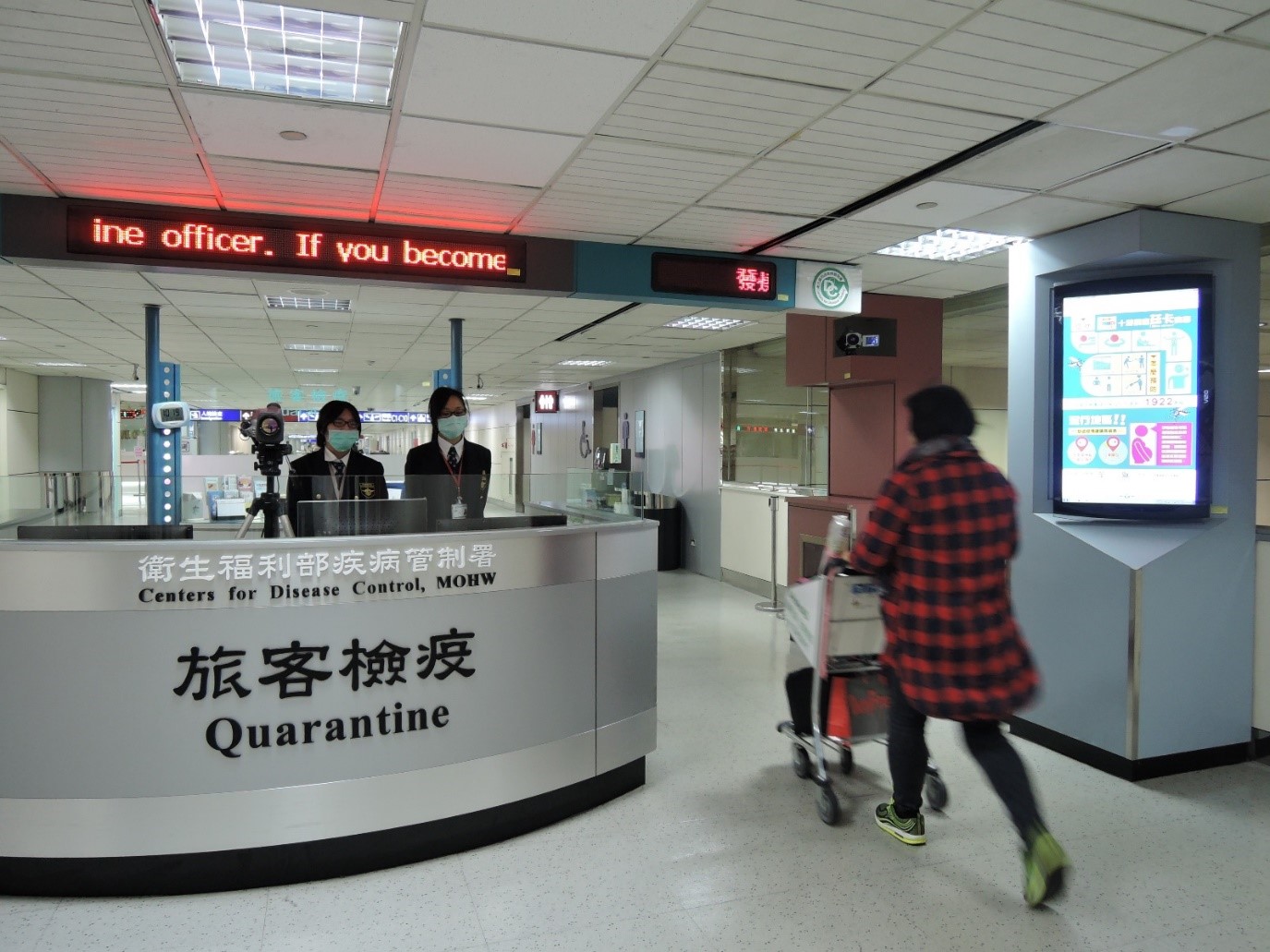- About CDC
- Diseases & Conditions
- Programs & Campaigns
-
Data & Statistics
- Taiwan National Infectious Disease Statistics System
- Statistics of HIV/AIDS
- Disease Surveillance Express
- Influenza Express
- National Notifiable Disease Surveillance Report
- Weekly Report of Enterovirus Infection
- Taiwan Healthcare-associated infection and Antimicrobial resistance Surveillance System
- Taiwan CDC Open Data Portal
- International Cooperation
Home
-
About CDC
- Diseases & Conditions
-
Programs & Campaigns
-
Data & Statistics
- Taiwan National Infectious Disease Statistics System
- Statistics of HIV/AIDS
- Disease Surveillance Express
- Influenza Express
-
National Notifiable Disease Surveillance Report
National Notifiable Disease Surveillance Report
-
Weekly Report of Enterovirus Infection
Weekly Report of Enterovirus Infection
- Weekly Report 2025
- Weekly Report 2024
- Weekly Report 2023
- Weekly Report 2022
- Weekly Report 2021
- Weekly Report 2020
- Weekly Report 2019
- Weekly Report 2018
- Weekly Report 2017
- Weekly Report 2016
- Weekly Report 2015
- Weekly Report 2014
- Weekly Report 2013
- Weekly Report 2012
- Weekly Report 2011
- Weekly Report 2010
- Weekly Report 2009
- Weekly Report 2008
- Taiwan Healthcare-associated infection and Antimicrobial resistance Surveillance System
- Taiwan CDC Open Data Portal
- International Cooperation
- News
- Privacy Policy
- Security Policy
- Government Website Open Information Announcement
- Copyright Notice on Health Educational Materials
Background
Chikungunya fever is an acute infection disease, which is transmitted to human through the bites of infected mosquitoes, including Aedes aegypti and Aedes albopictus. The classification of chikungunya virus is family Togaviridae and genus Alphavirus. Chikungunya has been identified in 110 more countries. Outbreaks have occurred in countries in Africa, Asia, Europe, the Americas, and the Indian and Pacific Oceans.
Chikungunya fever is rarely fatal. Symptoms are similar to dengue fever, but the difference is that some patients will have severe joint pain (lower back, ankle, knees, wrists or phalanges) for several weeks, months, or even years. The name chikungunya originates from African indigenous language, meaning “to become controlled”. This refers to the “stooped” appearance of those suffering with joint pain.
Epidemiology
Since Chikungunya was listed as a notifiable infectious disease in Taiwan beginning October 2007, the cumulative number of imported cases confirmed in 2019 has been the highest during the same period in the past years. Among the imported cases, the most cases were from Myanmar, followed by Thailand and Maldives. In July 2019, Taiwan Centers for Disease Control (Taiwan CDC) announced this year’s first confirmed indigenous Chikungunya case.
No local transmission of the virus has occurred and only 35 imported cases have been conformed in 2020-2024.
Figure: Chikungunya fever cases in Taiwan, 2007-2024.

Chikungunya Fever Surveillance in Taiwan

Prevention and Control
More Information
Chikungunya fever is an acute infection disease, which is transmitted to human through the bites of infected mosquitoes, including Aedes aegypti and Aedes albopictus. The classification of chikungunya virus is family Togaviridae and genus Alphavirus. Chikungunya has been identified in 110 more countries. Outbreaks have occurred in countries in Africa, Asia, Europe, the Americas, and the Indian and Pacific Oceans.
Chikungunya fever is rarely fatal. Symptoms are similar to dengue fever, but the difference is that some patients will have severe joint pain (lower back, ankle, knees, wrists or phalanges) for several weeks, months, or even years. The name chikungunya originates from African indigenous language, meaning “to become controlled”. This refers to the “stooped” appearance of those suffering with joint pain.
Epidemiology
Since Chikungunya was listed as a notifiable infectious disease in Taiwan beginning October 2007, the cumulative number of imported cases confirmed in 2019 has been the highest during the same period in the past years. Among the imported cases, the most cases were from Myanmar, followed by Thailand and Maldives. In July 2019, Taiwan Centers for Disease Control (Taiwan CDC) announced this year’s first confirmed indigenous Chikungunya case.
No local transmission of the virus has occurred and only 35 imported cases have been conformed in 2020-2024.
Figure: Chikungunya fever cases in Taiwan, 2007-2024.

Chikungunya Fever Surveillance in Taiwan
- Taiwan National Infectious Disease Statistics System–Chikungunya Fever
- Fever screening at international airports and seaports.
- Self–reporting through the toll–free 1922 hotline or local public health authority.

Prevention and Control
- Detection of imported chikungunya cases by active and passive surveillance at an early stage is needed to implement early response activities and reduce risk for local transmission.
- To prevent chikungunya fever, eliminate vector breeding sources and effectively lower vector (Aedes aegypti and Aedes albopictus) density.
- Taiwan CDC has devised prevention strategies for controlling indigenous chikungunya fever epidemic in Taiwan.
- (1) Primary prevention measures include source reduction and control of the vector population.
- (2)Secondary prevention measures cover disease surveillance and emergency/contingency mechanisms.
- (3)Tertiary prevention measures involve organizing continuing education workshops for medical personnel to improve health care quality.
- What is chikungunya fever?
- Chikungunya fever is an acute viral disease caused by chikungunya virus. The incubation period is 4–8 days (range, 2–12 days). Symptoms include high fever, headache, joint pain (lower back, ankle, knees, wrists or phalanges), joint swelling, rash, muscle pain, nausea, and fatigue.
- How is the chikungunya fever transmitted?
- Chikungunya fever cannot be transmitted directly from person to person. Chikungunya fever is transmitted to people by the bite of mosquito that is infected with the chikungunya virus. The mosquito becomes infected with chikungunya virus after biting a person who has chikungunya virus in their blood. In Taiwan, the Aedes albopictus and Aedes aegypti mosquito is the most important vector of chikungunya viruses.
- What can be done to reduce the risk of acquiring chikungunya fever?
- The best preventive measure for residents living in areas infested with Aedes albopictus or Aedes aegypti is to eliminate the places where the mosquito lays her eggs, primarily artificial containers that hold water.
- (1)Clean and remove any water containers and vector breeding sources.
- (2)Always place a tight lid on containers used for water storage.
- (3)Weekly, wash out containers with a brush or sponge to remove mosquito eggs.
- (4)Wear long sleeve shirts, long pants, socks and closed shoes to avoid mosquito bites.
- (5)Use repellents containing DEET (N, N–diethyl–m–toluamide), Picaridin or IR3535 on your clothing and exposed skin.
- (6)Use screens on doors and windows.
- The best preventive measure for residents living in areas infested with Aedes albopictus or Aedes aegypti is to eliminate the places where the mosquito lays her eggs, primarily artificial containers that hold water.
More Information
Images


PublishTime 2017/4/5
:::
About CDC
Data & Statistics
- Taiwan National Infectious Disease Statistics System
- Statistics of HIV/AIDS
- Disease Surveillance Express
- Influenza Express
- National Notifiable Disease Surveillance Report
- Weekly Report of Enterovirus Infection
- Taiwan Healthcare-associated infection and Antimicrobial resistance Surveillance System
- Taiwan CDC Open Data Portal
Taiwan Centers for Disease Control
TEL:886-2-2395-9825
Copyright © 2025 Taiwan Centers for Disease Control. All rights reserved.

